Calibrachoa is a vivid representative of ampelous plants, which has a huge number of bell flowers. The flower belongs to the Solanaceae family. Its wild species can be found in Uruguay, Argentina and Brazil. A spherical bush today is very popular among flower growers.
The plant is often grown in hanging flowerpots to decorate loggias, balconies, galleries and gardens. A magnificent flowering bush is able to make a bright note in the interior of any room or landscape design of the site. For such an abundant flowering among the people, the flower received the name "million bells."
Calibrachoa is classified as a non-capricious plant, so care and growing a bush will not take much time and energy from the grower.
Content
Plant characteristics
Calibrachoa forms many buds and stems, which form a beautiful flowering ball. The opened flower in diameter can reach 3 cm. The first varieties of the plant had purple flowers, but thanks to selection work today you can meet a wide variety of colors: blue, purple, yellow, white, red, etc.
The spherical bush falls from the flowerpot into flowering shoots, so it is referred to as ampelous plants. The flowers are very similar in shape to a bell. A feature of the caliber is the difference in the color of the neck of the bud from the petals. Most varieties have simple flowers, but there are terry species. The sizes of terry buds are much larger, but they are smaller on the stems than in simple species.
Long semi-penetrating stems can reach 1.5 m in length. As they grow, they begin to lignify. Slightly pubescent elongated leaves are oval and small in size.
Until 1990, calibrachoa was considered a type of petunia, because externally the plants are very similar. In 1990, botanists conducted research, thanks to which it became known that these are completely different, albeit related species.
Names of calibrachoa varieties with description
The plant has a large number of varieties, most of which flower growers are successfully grown in conditions of central Russia. Even a beginner grower can grow full blooming bushes on his plot. To understand the variety of varieties, it is worth considering the photos and names of the most popular.
Quite popular is the Kablum series, which includes only four varieties. The variety is characterized by whole-leaflets, the length of which does not exceed 4 cm and a width of 1 cm. Lignified stems have good bushiness. Bright green leaves are covered with small pubescence. The base of the corolla is always colored yellow. Varieties of the variety have the following characteristics:
- Caliberhoa White fill with solemn beauty any area, like most white flowers. Annuals are great for both single landings and group compositions. The diameter of an adult bush does not exceed 35 cm;
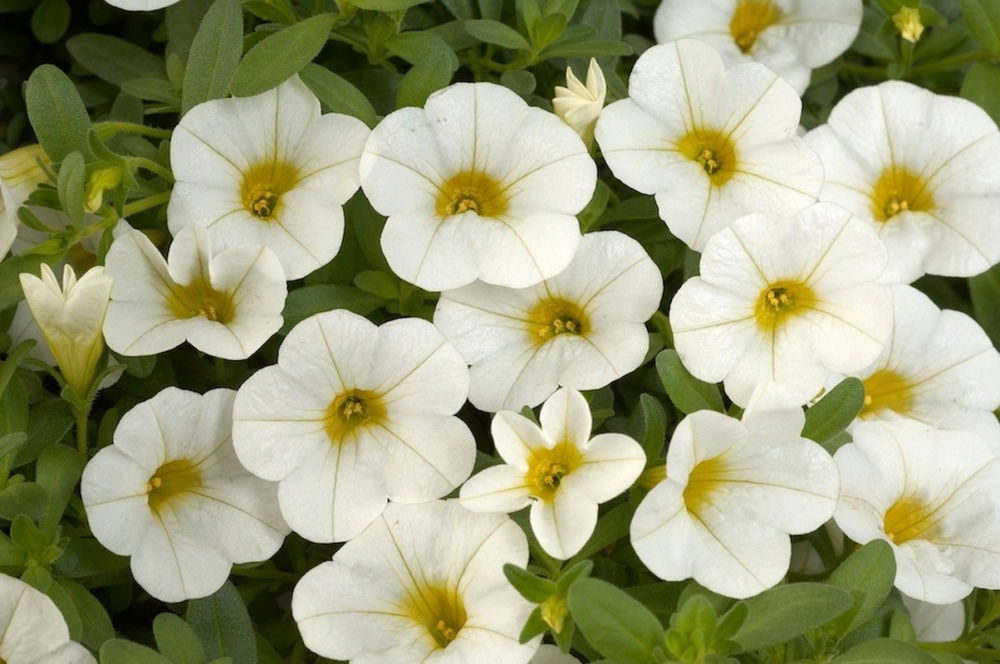
White - Kablum Deep Pink is distinguished by miniature colors of raspberry or pink.The base of the bud is also painted yellow. Lanceolate leaves are densely pubescent. The color of the petals depends on the climate and the amount of lighting;
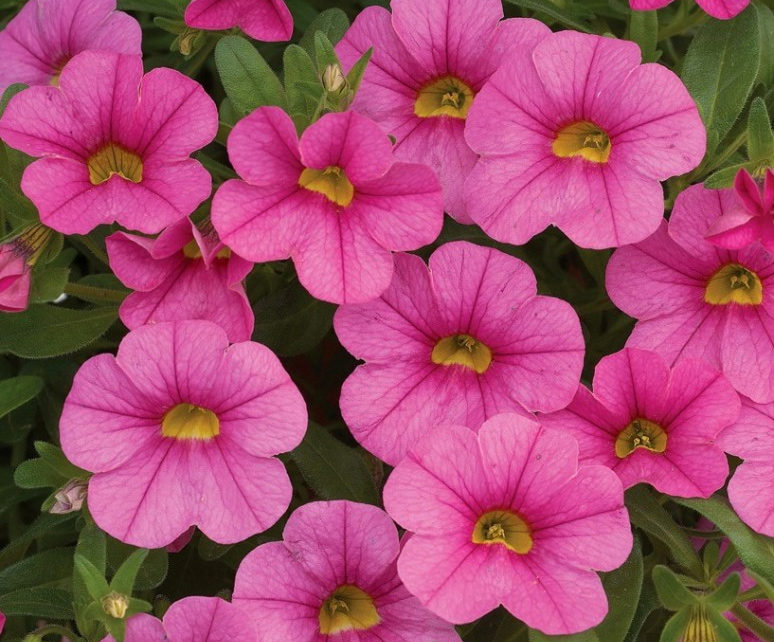
Deep pink - Caliberhoa Yellow has saturated yellow flowers up to 3 cm in diameter. For the brightness of the color of the plant was called "garden sun." The base of the corolla is painted in a darker shade than the petals;
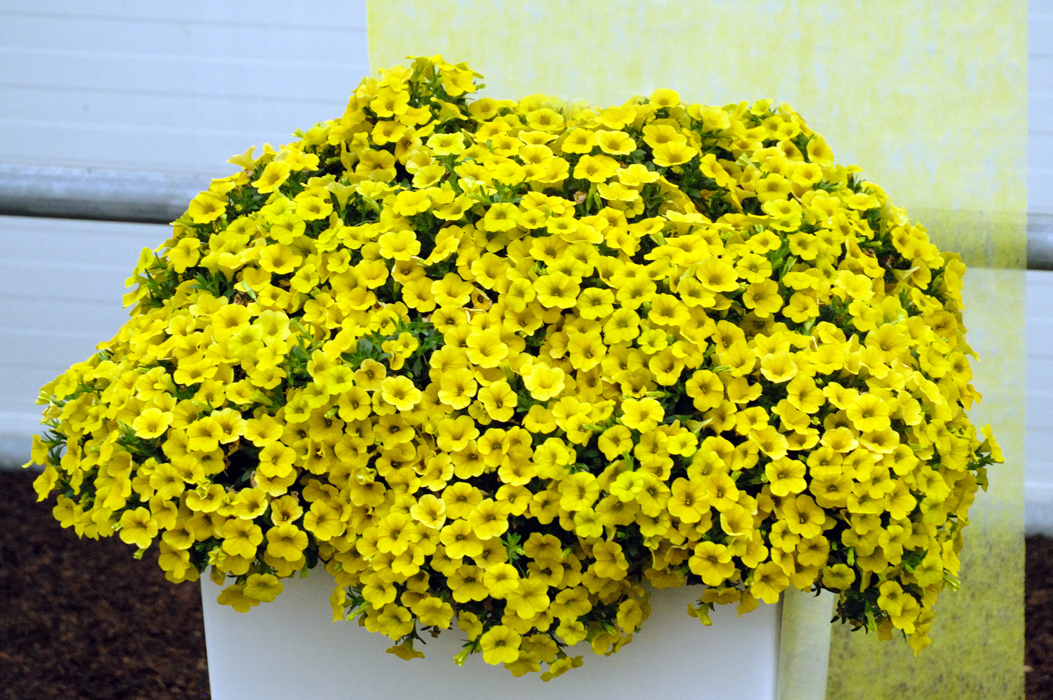
Yellow - Deep Blue is the most popular among congeners. Judging by the name, the petals should be dark blue. In fact, they are closer to purple, and the middle is painted in a characteristic yellow hue. Many small flowers alternately bloom on the bush during the summer-autumn period.
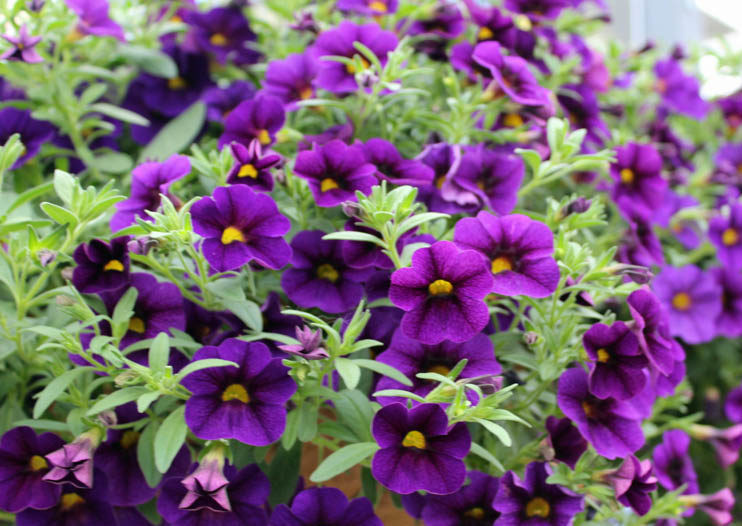
Deep blue
Among the variety variety, it is worth paying attention to the variety Million bells. A distinctive feature is its high ability to seed propagation, which cannot be said about its relatives, which are most often propagated by cuttings. Flowers can be dyed purple, blue or lilac.
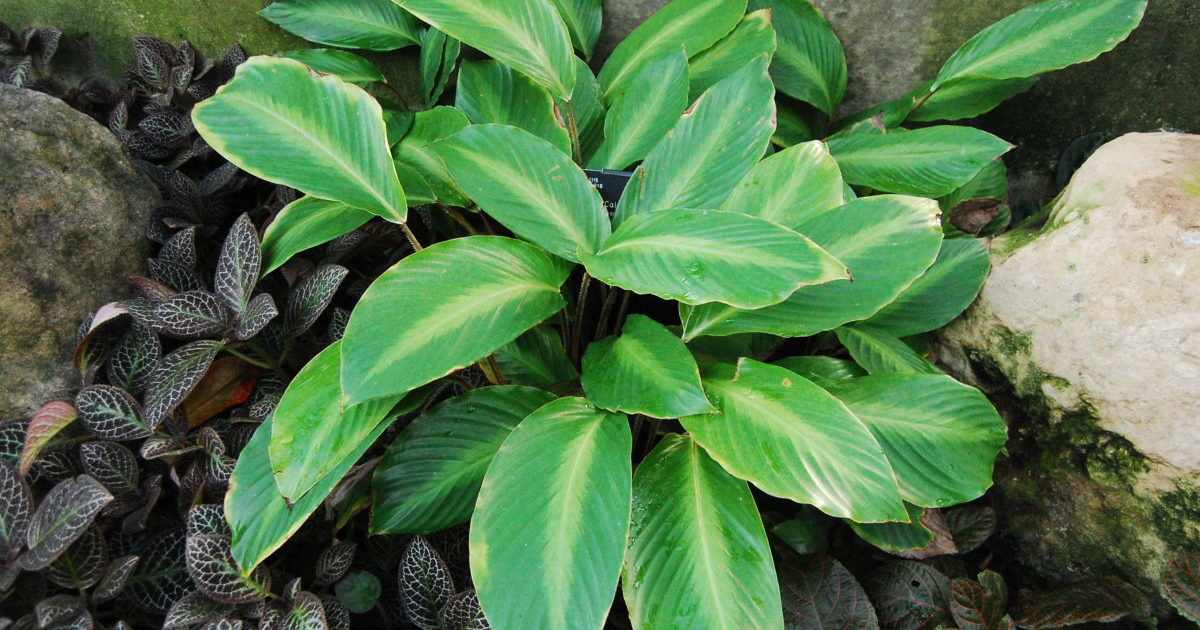 You may be interested in:
You may be interested in:Caring for Calibraoa at Home
Even a beginner can take care of the plant, because the flower is quite unpretentious. For proper growth and abundant flowering, he needs proper care: an optimal location with good lighting, regular watering and fertilizer.
Lighting
The flower should be placed in a sunny place, but during the midday heat it is better to shade it, otherwise sensitive leaves may suffer. Drafts and strong gusts of wind should be excluded, so you can place a pot between tall plants or near the house.
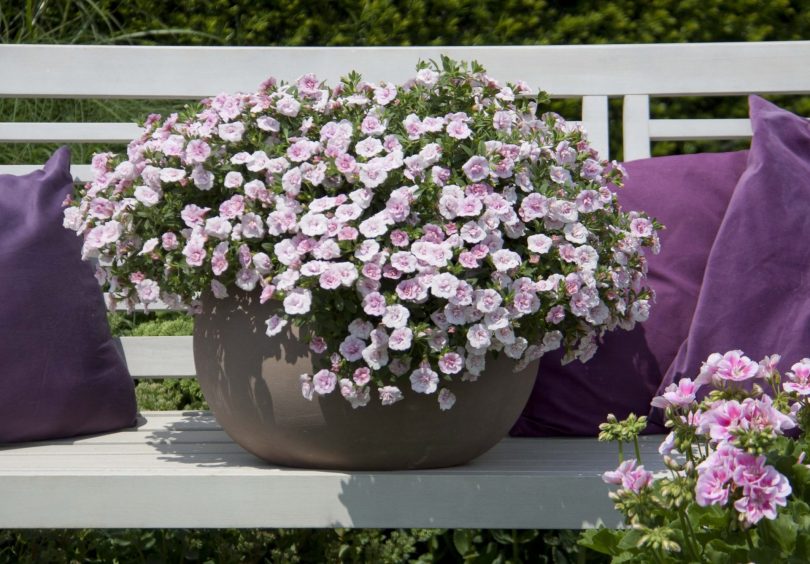
Temperature and humidity
Planting a plant in open ground or taking flowerpots out into the street is possible only after the threats of night frost have passed. The air temperature at this time should not be lower than 22 ° C.
Watering and feeding
It is best to water calibrachoa in the morning. Water for this procedure should be soft - settled or rain. Watering is carried out regularly, but with a moderate amount of liquid, because the flower is sensitive to excess moisture in the soil.

To get a lush flowering bush, you need to regularly make complex dressings. They must contain potassium, nitrogen and phosphorus. It is recommended to feed the flower weekly. After planting, fertilizers with a predominance of nitrogen should be applied, and in the flowering phase, fertilizers should contain more potassium and phosphorus. The ready-made complex of fertilizers for petunias is perfect for caliber.
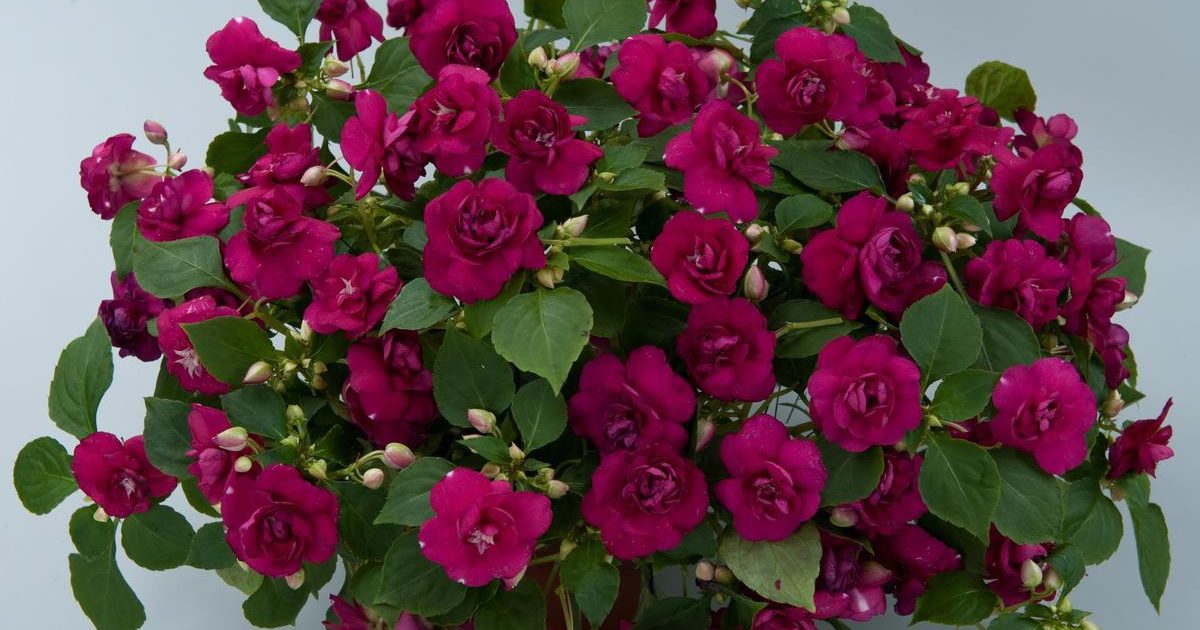 You may be interested in:
You may be interested in:Pruning and pinching
A sprawling bush is periodically pruned to give it a beautiful appearance and remove damaged shoots.
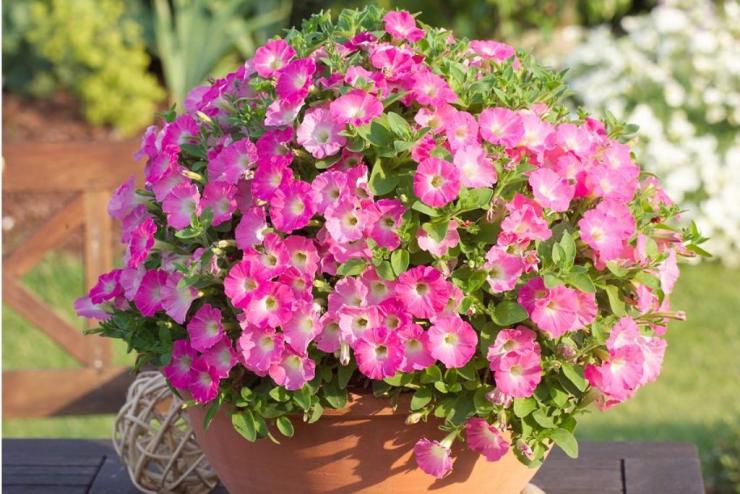
The next pruning and pinching is carried out around July. The stems are cut in half, which helps the bush to branch better.The pinching procedure is to remove the upper cuttings and processes, which also contributes to the growth of the bush in breadth. Damaged or dry stems and leaves are also cut. As a result, you can get a beautifully shaped lush plant.
Diseases, pests and methods of dealing with them
Diseases most often affect plants that have weakened as a result of improper care. There are several most common diseases:
- Pale yellow foliage and sparse flowering indicate the occurrence of chlorosis. It appears when there is an excess of calcium in the soil and a lack of iron, when using hard water for irrigation, as well as with excessive irrigation. For treatment, iron-containing fertilizers should be applied and the frequency and abundance of irrigation should be adjusted.
- Powdery mildew is a fungal disease that affects flowers and leafy parts. The reason for the appearance may be overfeeding with nitrogen-containing fertilizers, wet and hot weather, and even pruning too large, which reduces the flower's resistance to disease. The affected areas of the bush must be cut, and the plant several times treated with sulfur.
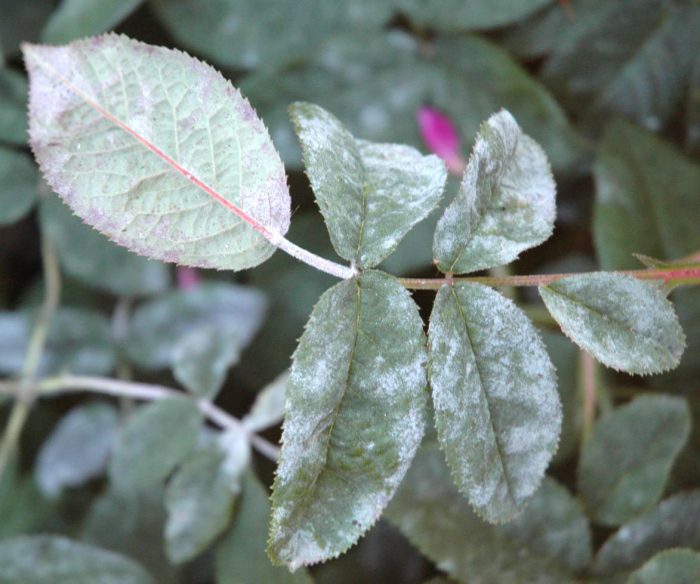
The following insects can harm the flower: thrips, aphids, spider mites and whiteflies. Due to the size and a large amount of foliage, it is better to use special insecticides to control insects, because treatment with a soap solution is unlikely to give a positive result. For processing use the means of Aktar, Fitoverm, Sunmayt, etc. When infected with a spider mite, the procedure is recommended to be carried out several times with a break of one week.
Transfer
Transplantation is recommended to be carried out annually with almost complete replacement of the soil. This is due to the fact that during flowering, the bush draws almost all nutrients from the soil, therefore, for the next bud formation, the substrate must be replaced. Most varieties of caliberhoa are annuals, and they will not need a transplant. But experienced flower growers distinguish several species that can be preserved for the next season.
 You may be interested in:
You may be interested in:Features of winter gauge care
Beginning gardeners are often interested in how to properly organize care for caliber in the winter. This topic is very relevant, because buying cuttings every year is pretty expensive. In most cases, the plant tolerates winter peace safely, and with the advent of spring begins to grow actively.
There are several options for preserving the uterine flower:
- in the basement or cellar;
- in the fridge;
- on a cool windowsill.
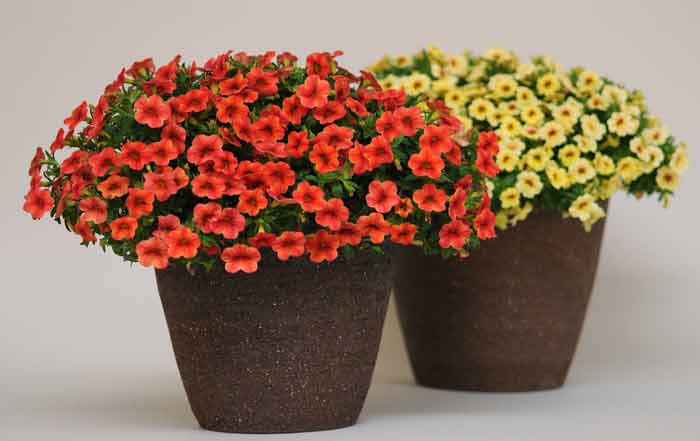
They continue to take care of it as usual until it fades completely. After the end of the flowering phase, watering is reduced to once a week. At the same time, it is necessary to reduce the ambient temperature to 12-18 ° C. The most difficult moment in winter care is maintaining moderate soil and air humidity. It is necessary to feed a resting plant no more than once a month with phosphorus-potassium top dressing.
In the middle zone of our country, calibrachoa is classified as annuals, so plants are often thrown away. Frosts are indeed fatal to him, but if you move the flowerpot to the basement, in the spring you can resume the growth of vegetative mass. To do this, the bush is cut, leaving small stumps from the root about 10 cm, while the soil continues to be moderately moistened.
The basement should have humid and cool air (no more than 10˚С). An additional light source at this time is not needed. The flowerpot is left there until about mid-February. After this, the container is placed in a room on the windowsill, and with the onset of spring, the plant will delight young shoots.
If it is not possible to store the flower in such conditions, then you can use the refrigerator, which will provide a cool winter for several cuttings. The positive aspects of this method include stable temperature maintenance (about 3 ° C) and a suitable soil mixture moisture without watering. The disadvantages include the need for regular ventilation, a short rest period and poor condition of the bush (withering and dying of the aerial parts).
The technology of growing caliberhoa seeds
Most often, the plant is propagated using cuttings, because flowers grown from seeds do not always turn out to be as beautiful as the mother bush. The seed method requires a lot of time, patience and attention of the grower.
First of all, planting material is soaked for a day, and then dried with a soft cloth or paper towel. The sowing capacity should be small. It is filled with earth mixtures, which should include peat, compost and mineral fertilizing, and after sowing, cover with glass or a bag.
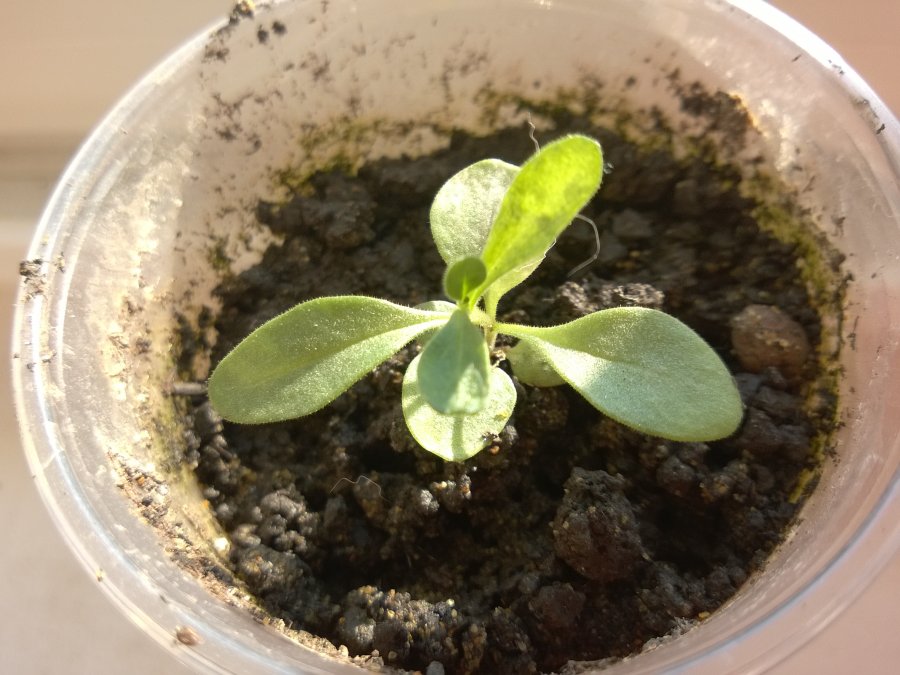
Shoots will appear soon, and not all seeds will germinate. Florists use special fertilizers or a weak solution of potassium permanganate to accelerate growth. After germination, the sprouts are fed several times, mixing fertilizers with water for irrigation.
For sowing, you can use a peat tablet, which is pre-soaked in boiling water. Planting material is laid on its surface and covered with a film to create a mini-greenhouse.
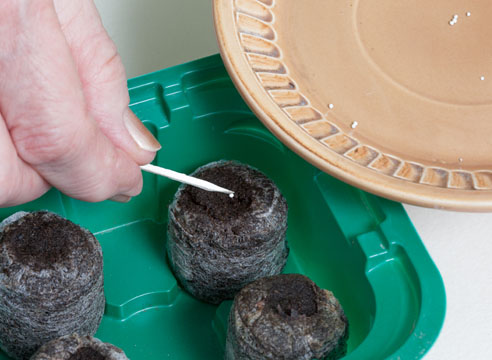
For germination, it is important to take care of additional illumination. After 7-10 days, the first shoots appear, which must be periodically ventilated. After a few days, the sprouts will get used to room conditions, and the film can be removed.
After the formation of several leaves carry out a pick. The bottom of a small pot is lined with a layer of high-quality drainage, then with a layer of sand, and then the main substrate. After transplanting seedlings, it is necessary to take care of the proper selection of fertilizer, because the splendor of flowering depends on this.
Common Growing Questions
Calibracha is an unpretentious and easy-to-care plant that even beginners can grow. Beautiful spherical bushes look great both in the garden and indoors.

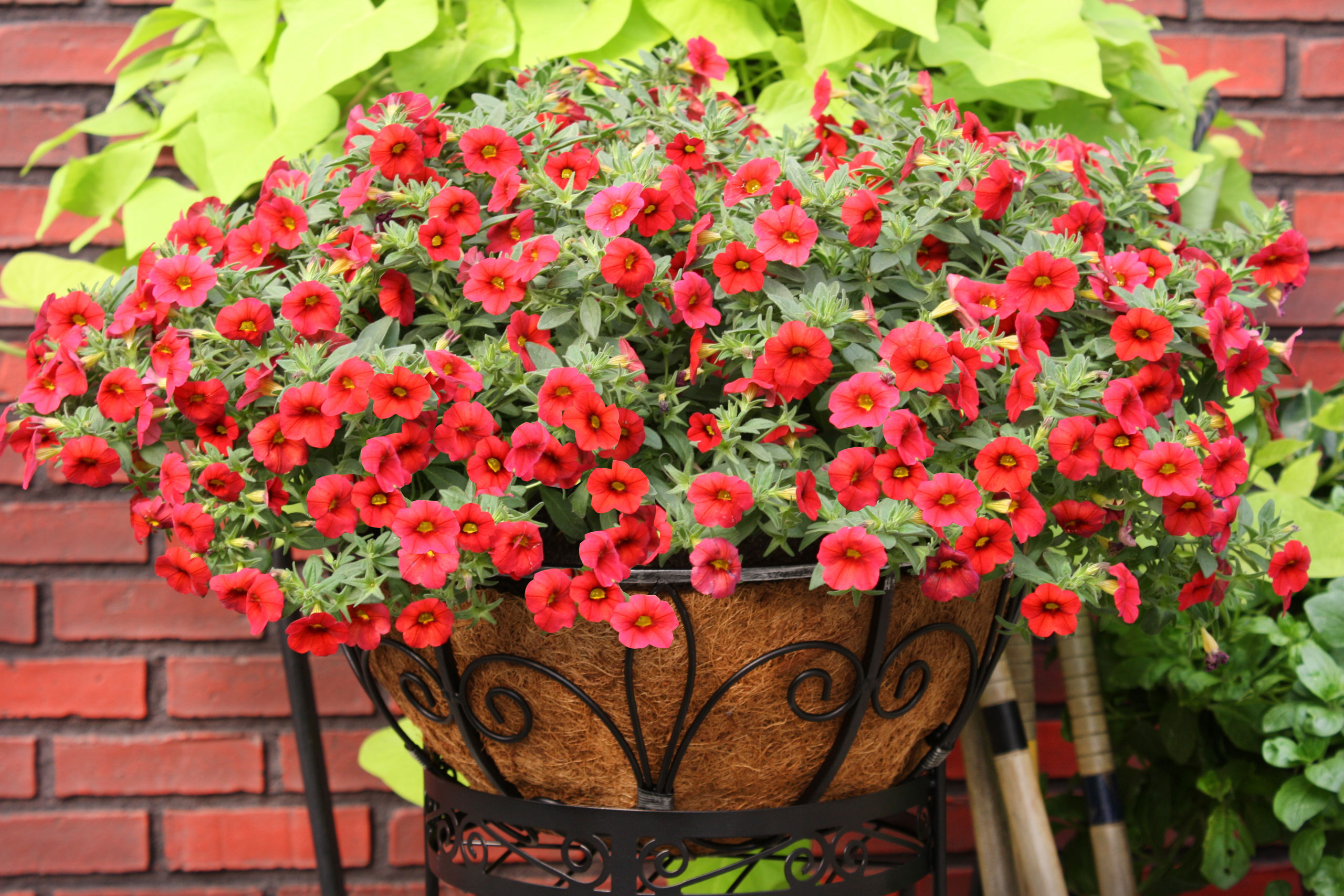
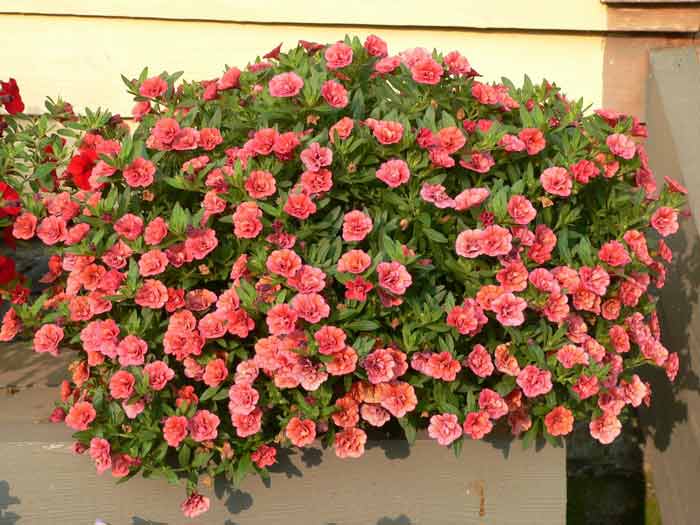
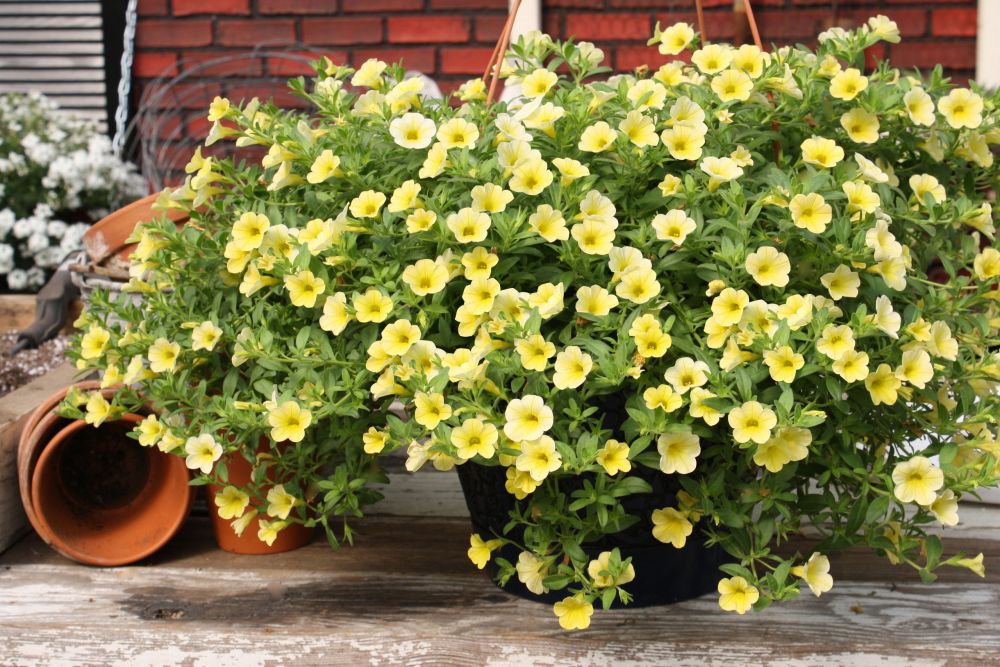
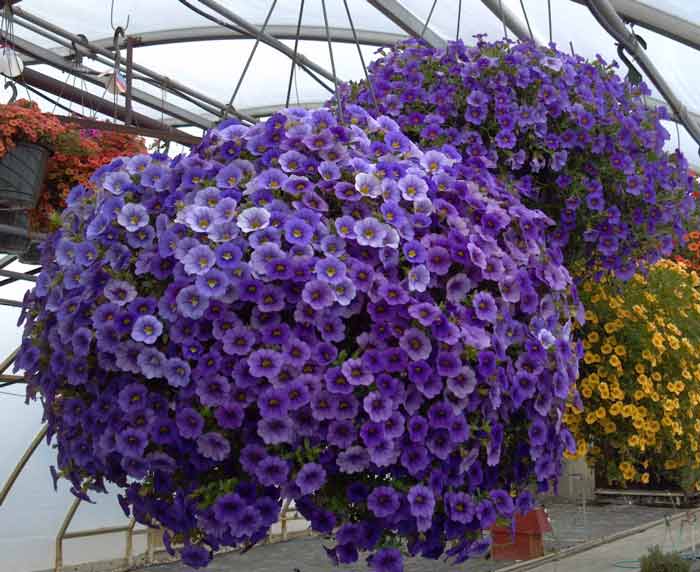
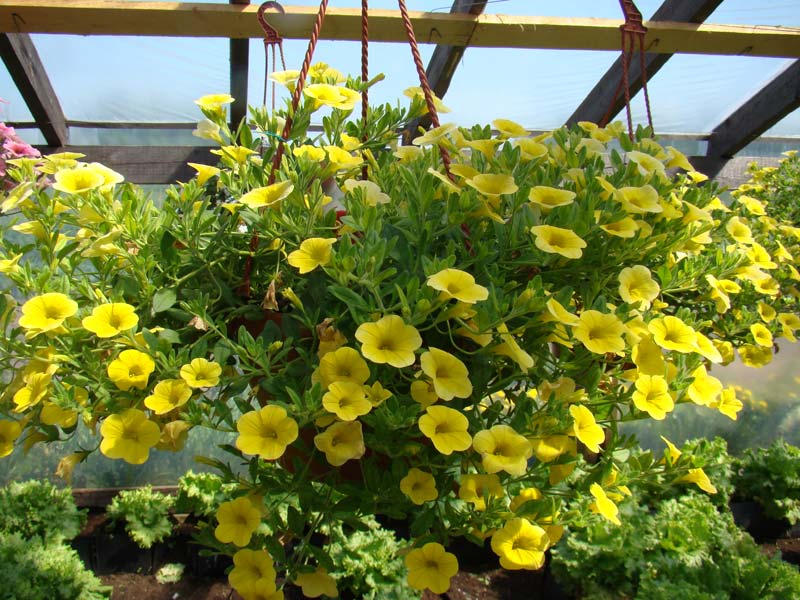
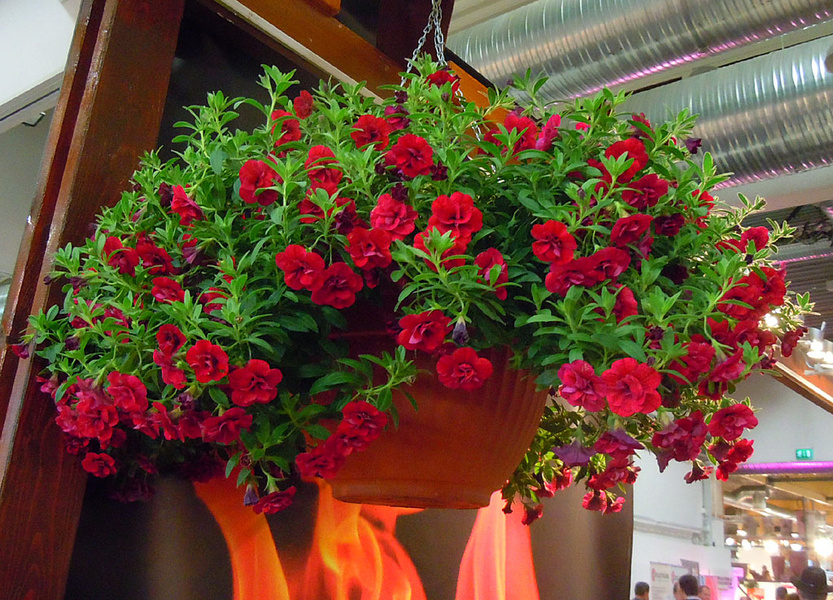
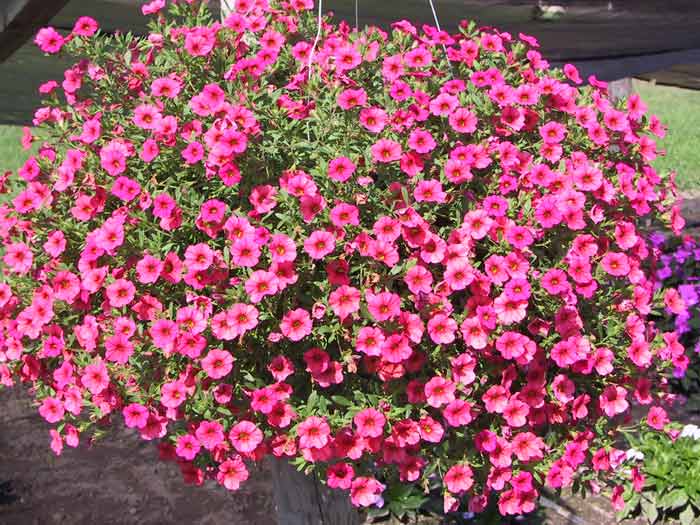



 Sow in the ground, without seedlings: 10 beautiful and unpretentious flowers
Sow in the ground, without seedlings: 10 beautiful and unpretentious flowers Platicodon planting and outdoor care
Platicodon planting and outdoor care Hosta - planting and care in the open ground in the Urals
Hosta - planting and care in the open ground in the Urals Oleander - care and growing at home
Oleander - care and growing at home